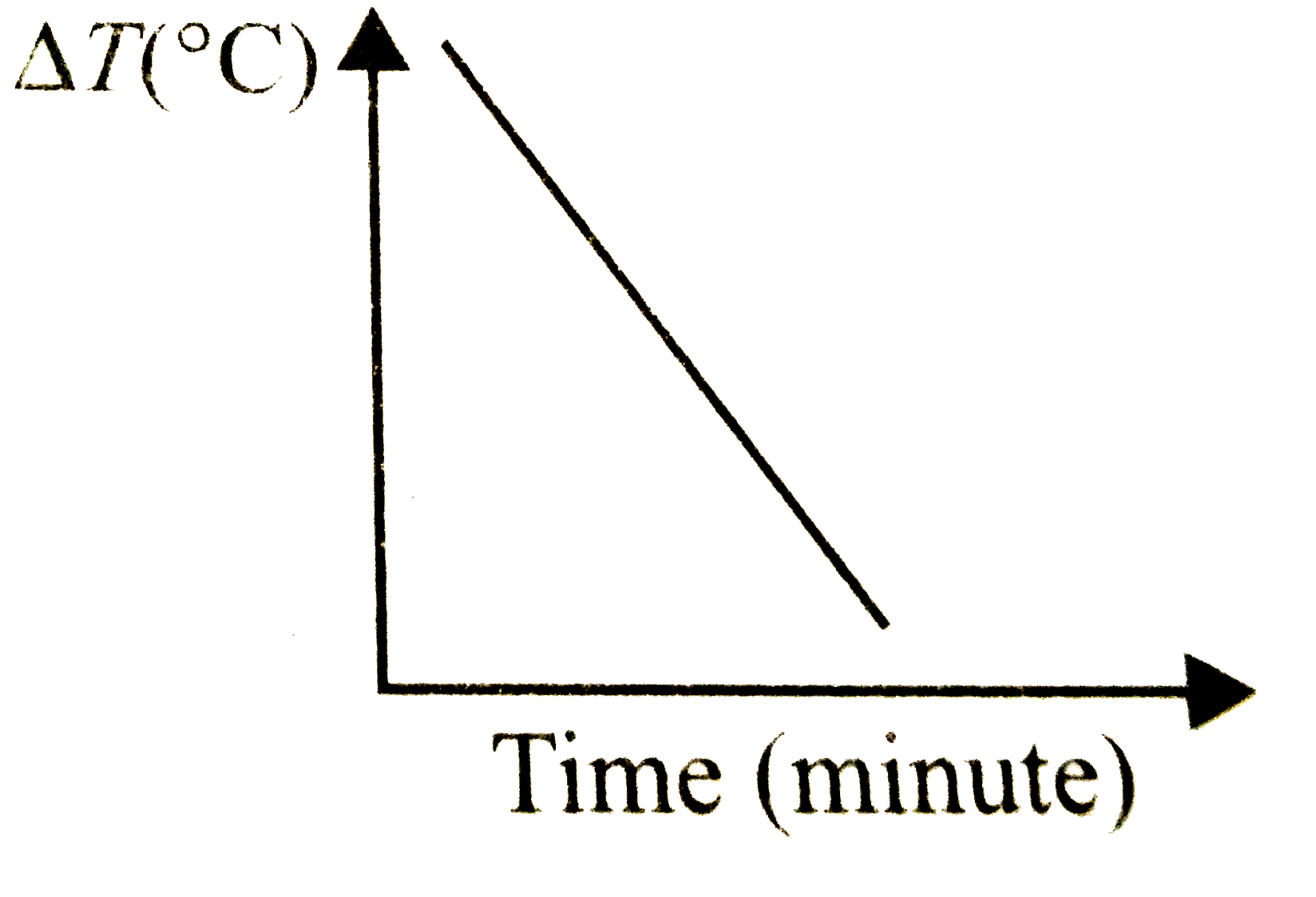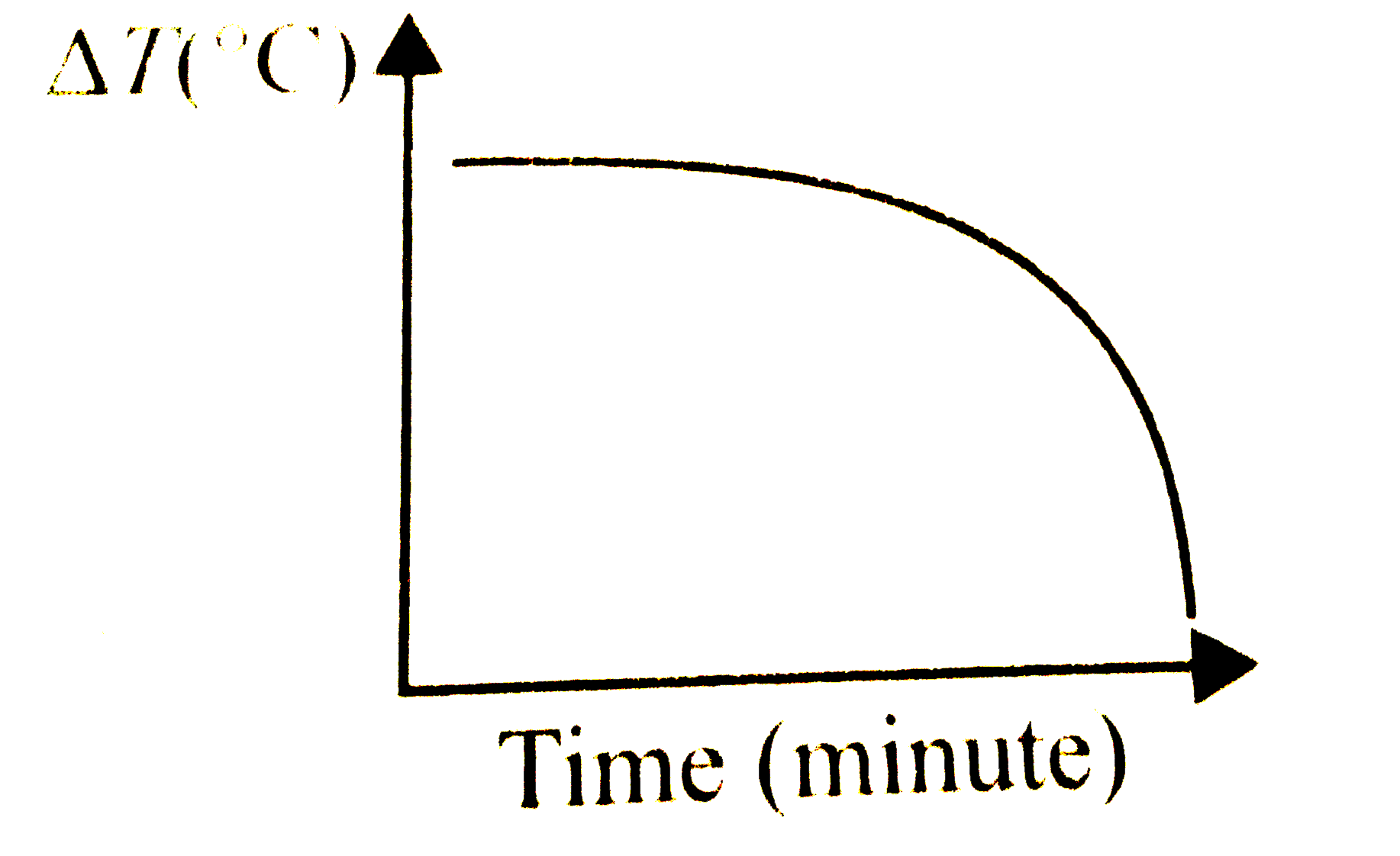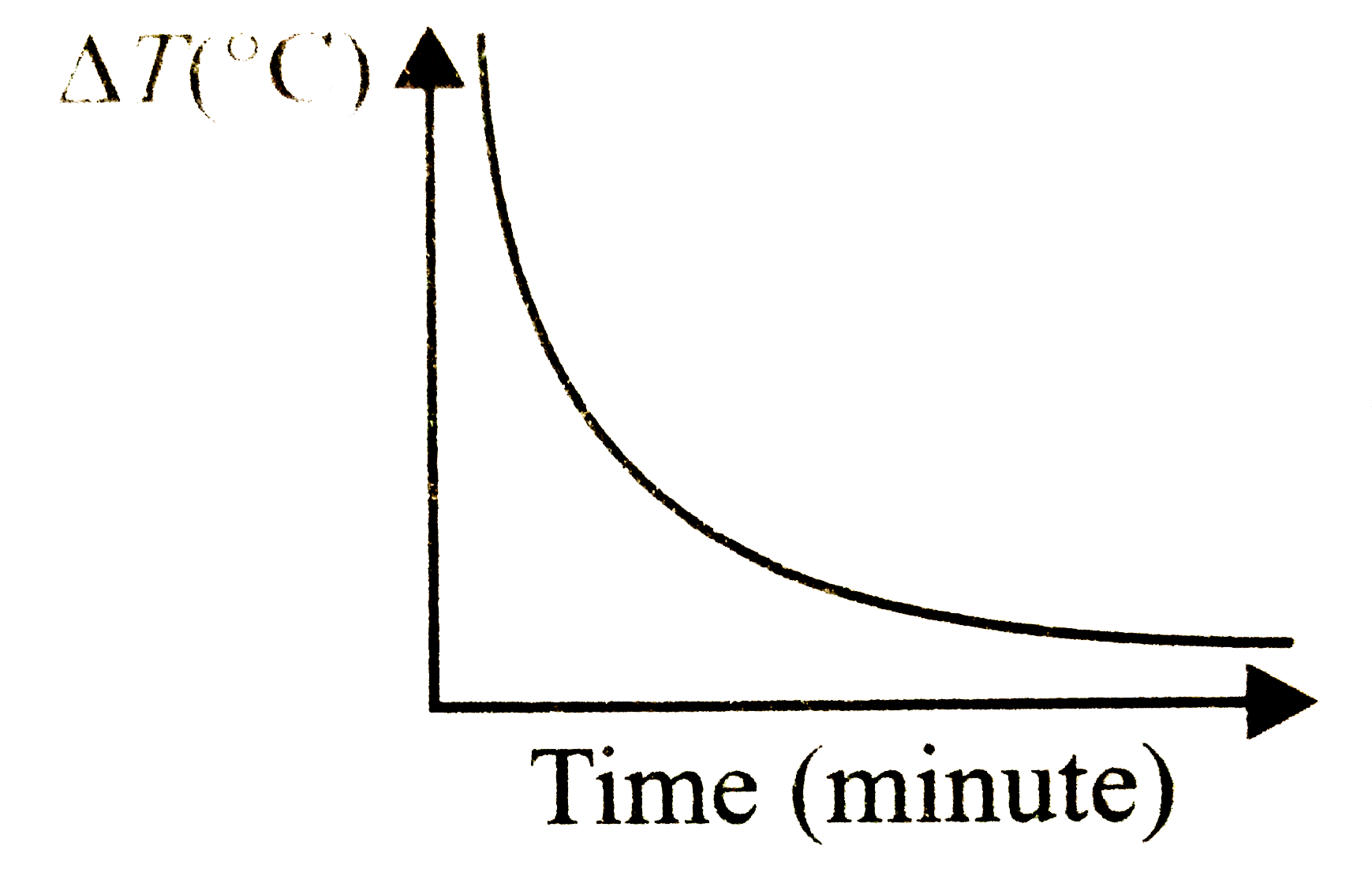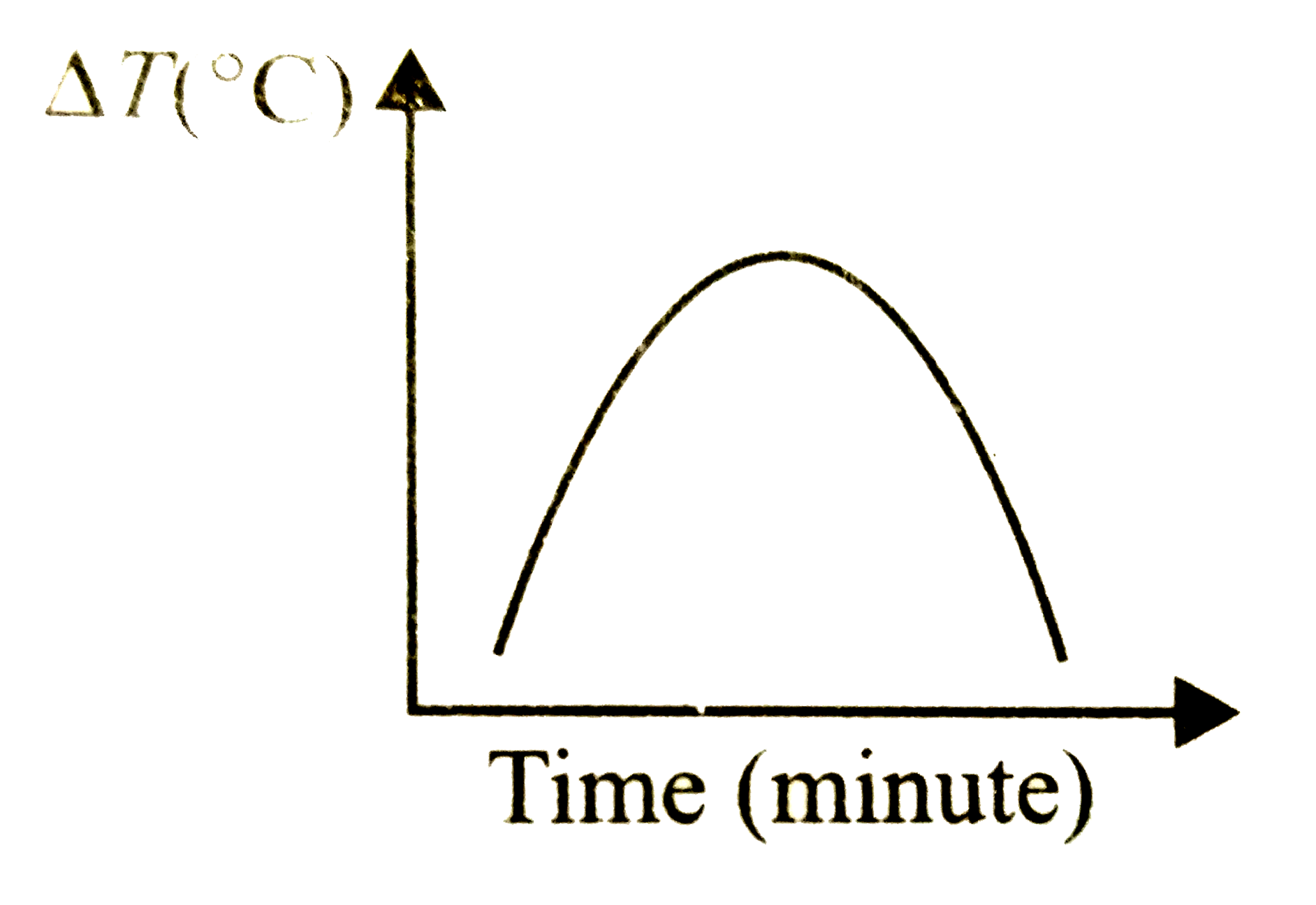A hot body placed in air is cooled down according to Newton's law of cooling, the rate of decrease of temperature being k times the temperature difference from the surrounding. Starting from t=0 , find the time in which the body will loss half the maximum heat it can lose.
To solve the problem step-by-step, we will use Newton's law of cooling, which states that the rate of change of temperature of a body is proportional to the difference in temperature between the body and its surroundings.
Step 1: Set up the equation according to Newton's law of cooling
According to Newton's law of cooling, we can express the rate of decrease of temperature as:
dθdt=−k(θ−θ0)
where:
- θ is the temperature of the body at time t,
- θ0 is the temperature of the surroundings,
- k is a constant.
Step 2: Rearranging the equation
Rearranging the equation gives:
dθθ−θ0=−kdt
Step 3: Integrate both sides
Integrating both sides, we have:
∫dθθ−θ0=−k∫dt
This results in:
ln|θ−θ0|=−kt+C
where C is the integration constant.
Step 4: Solve for the constant of integration
At t=0, let θ=θ1 (the initial temperature of the body). Thus:
ln|θ1−θ0|=C
So, we can rewrite the equation as:
ln|θ−θ0|=−kt+ln|θ1−θ0|
Step 5: Exponentiate to eliminate the logarithm
Exponentiating both sides gives:
|θ−θ0|=|θ1−θ0|e−kt
Step 6: Express the temperature difference
We can express the temperature of the body at time t as:
θ=θ0+(θ1−θ0)e−kt
Step 7: Determine the maximum heat loss
The maximum heat loss occurs when the body reaches thermal equilibrium with the surroundings, which is when θ approaches θ0. The maximum heat loss Qm can be expressed as:
Qm=m⋅s⋅(θ1−θ0)
where m is the mass and s is the specific heat capacity.
Step 8: Calculate half the maximum heat loss
Half of the maximum heat loss is:
Qm2=m⋅s⋅(θ1−θ0)2
The corresponding temperature drop Δθ when the body loses half the maximum heat is:
Δθ=θ1−θ02
Step 9: Set up the equation for the temperature at time t1
If the body loses this heat in time t1, the temperature at t1 will be:
θ(t1)=θ1−Δθ=θ1−θ1−θ02=θ1+θ02
Step 10: Substitute into the temperature equation
Substituting θ(t1) into the temperature equation gives:
θ1+θ02−θ0=(θ1−θ0)e−kt1
This simplifies to:
θ1−θ02=(θ1−θ0)e−kt1
Step 11: Solve for t1
Dividing both sides by (θ1−θ0) (assuming it is not zero) gives:
12=e−kt1
Taking the natural logarithm of both sides results in:
−kt1=ln(12)=−ln(2)
Thus, we find:
t1=ln(2)k
Final Answer
The time in which the body will lose half the maximum heat it can lose is:
t1=ln(2)k
According to Newton's law of cooling, we can express the rate of decrease of temperature as:
dθdt=−k(θ−θ0)
where:
- θ is the temperature of the body at time t,
- θ0 is the temperature of the surroundings,
- k is a constant.
Rearranging the equation gives:
dθθ−θ0=−kdt
Integrating both sides, we have:
∫dθθ−θ0=−k∫dt
This results in:
ln|θ−θ0|=−kt+C
where C is the integration constant.
At t=0, let θ=θ1 (the initial temperature of the body). Thus:
ln|θ1−θ0|=C
So, we can rewrite the equation as:
ln|θ−θ0|=−kt+ln|θ1−θ0|
Exponentiating both sides gives:
|θ−θ0|=|θ1−θ0|e−kt
We can express the temperature of the body at time t as:
θ=θ0+(θ1−θ0)e−kt
The maximum heat loss occurs when the body reaches thermal equilibrium with the surroundings, which is when θ approaches θ0. The maximum heat loss Qm can be expressed as:
Qm=m⋅s⋅(θ1−θ0)
where m is the mass and s is the specific heat capacity.
Half of the maximum heat loss is:
Qm2=m⋅s⋅(θ1−θ0)2
The corresponding temperature drop Δθ when the body loses half the maximum heat is:
Δθ=θ1−θ02
If the body loses this heat in time t1, the temperature at t1 will be:
θ(t1)=θ1−Δθ=θ1−θ1−θ02=θ1+θ02
Substituting θ(t1) into the temperature equation gives:
θ1+θ02−θ0=(θ1−θ0)e−kt1
This simplifies to:
θ1−θ02=(θ1−θ0)e−kt1
Dividing both sides by (θ1−θ0) (assuming it is not zero) gives:
12=e−kt1
Taking the natural logarithm of both sides results in:
−kt1=ln(12)=−ln(2)
Thus, we find:
t1=ln(2)k
The time in which the body will lose half the maximum heat it can lose is:
t1=ln(2)k
Topper's Solved these Questions
- HEAT TRANSFERBook:HC VERMA ENGLISHChapter:HEAT TRANSFERExercise:OBJECTIVE I
Explore 10 Videos
- HEAT TRANSFERBook:HC VERMA ENGLISHChapter:HEAT TRANSFERExercise:OBJECTIVE II
Explore 6 Videos
- HEAT TRANSFERBook:HC VERMA ENGLISHChapter:HEAT TRANSFERExercise:QUESTIONS FOR SHORT ANSWER
Explore 11 Videos
- HEAT AND TEMPERATUREBook:HC VERMA ENGLISHChapter:HEAT AND TEMPERATUREExercise:Objective 2
Explore 6 Videos
- INTRODUCTION TO PHYSICSBook:HC VERMA ENGLISHChapter:INTRODUCTION TO PHYSICSExercise:Question for short Answer
Explore 4 Videos
Similar Questions
Derive Newton's law of cooling to show that the rate of loss of heat from the body is proportional to the temperature difference between the body and its surroundings.
View SolutionA hot liquid is kept in a big room. According to Newton's law of cooling rate of cooling liquid (represented as y) is plotted against its temperature T. Which of the following curves may represent the plot?
View Solution
Knowledge Check
A hot liquid is kept in a bog room. Accoding to Newton's law of cooling rate of cooling liquid (represented as y) is plotted against its temperature T. Which of the following curves may represent the plot?
A B
B C
C D
D
Assertion: According to Newton's law of cooling, the rate of loss of heat, −dQ/dt of the body is directly proportional to the difference of temperature.
Reason :This law holds for all type of temperature differences.Alaw of thermometryBNewton's law of coolingClaw of calorimetryDzeroth law
A hot body placed in a surrounding of temperature θ0 obeys Newton's law of cooling dθdt=−k(θ−θ0) . Its temperature at t=0 is θ1 the specific heat capacity of the body is s and its mass is m. Find
(a) the maximum heat that the body can lose and
(b) the time starting from t=0 in which it will lose 90% of this maximum heat.
View SolutionAccording to Newton’s law of cooling, the rate of cooling of a body is proportional to (Δθ)n , where Δθis the difference of the temperature of the body and the surrounding, and n is equal to :
View SolutionIn the circuit shown the resistance R is kept in a chamber whose temperature. is 20∘C which remains constant. The initial temperature and resistance of R is 50∘C and 15Ωrespectively. The rate of change of resistance R with temperature is 12Ω/∘C and the rate of decrease of temperature of R is In(3/100) times the temperature difference from the surrounding (Assume the resistance R loses heat only in accordance with Newton's law of cooling) If K is closed at t = 0, then find the
(a) value of. R for which power dissipation in it is maximum.
(b) temperature of R when power dissipation is maximum
(c) time after which the power dissipation will be maximum

View SolutionIf the system were lossing heat according to Newton's cooling law the temperature of the mixture would change with time according to (while heater was on) .
View SolutionA body at a temperature of 500F is placed outdoors where the temperature is 1000F . If the rate of change of the temperature of a body is proportional to the temperature difference between the body and its surrounding medium. If after 5 min the temperature of the body is 600F , find (a) how long it will take the body to reach a temperature of 750 F and (b) the temperature of the body after 20 min.
View SolutionA liquid in a beaker has temperature θ(t) at time t and θ0 is temperature of surroundings, then according to Newton's law of cooling the correct graph between loge(θ−θ0) and t is :
View Solution